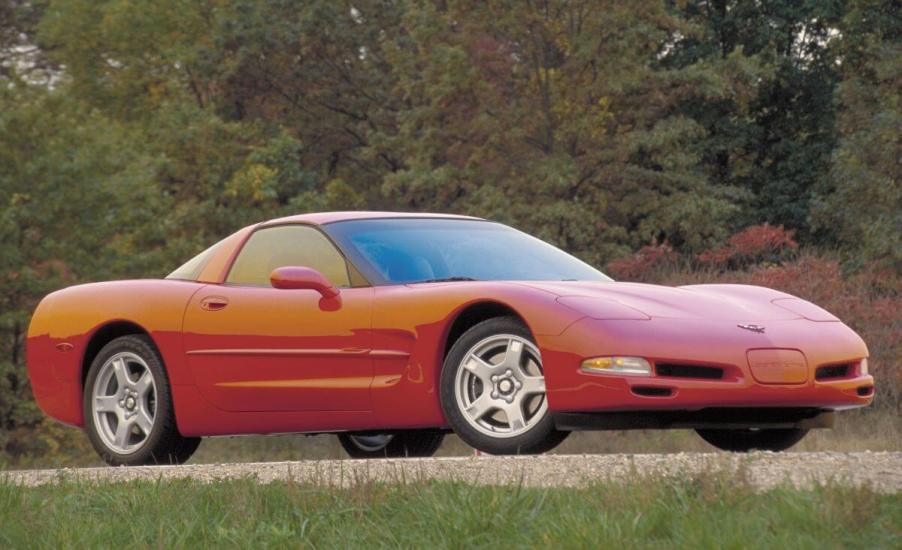
What Year Is the C5 Corvette?
When the C5 Corvette debuted on the market, it won the hearts of many sports car enthusiasts thanks to its high-performance construction, exterior design that rivaled its competitors, and updated transmission location. Originally named the Chevrolet Corvette (C5) -created by General Motors’ Chevrolet Division – the C5 Corvette was the fifth generation of the Chevy Corvette performance line.
In fact, it’s the C5 Corvette that inspired the production of some impressive sub-models, such as the Z06 and other sporting sub-models like the C5-R, which dominated the 24 Hours of Le Mans GTS/GT1 class and 24 Hours of Daytona. So, what model years comprised the C5 Corvette generation, and what are the common problems of the Chevy Corvette?
A brief overview of the C5 Corvette
Following its launch in 1997, the C5 Corvette was a significant upgrade from its predecessor – the Corvette C4, which was released in four generations from 1983-1996. Besides a new LSI engine and transmission location, the C5 has a new hydroformed box frame to facilitate its convertible body style. However, earlier generations were available in coupe formats, particularly the first-year models.
Chevrolet had to develop a rear-mounted assembly to improve handling, which could only be achieved by relocating the transmission. By using a torque tube connected to the new engine, the configuration allowed for a balanced front-back weight distribution. Combining a low weight, Computer-powered Gear Shifting, and a low drag coefficient Computer-Aided Gear-Shifting, the C5 vaunted higher EPA ratings of 18mpg/25mpg for auto transmission and 19mpg/28mpg for manual transmission versions.
As noted on Synergy Motor Sports, the C5 was the first Corvette to feature a drive-by-wire throttle, assistance-based power steering, and a parallel windshield wiper configuration. Another great addition included a head-up display (HUD) – a transparent display that enabled drivers to have an at-a-glance look at the data without taking their eyes off their usual viewpoints.
In total, 248,715 models of the C5 Corvette were produced between 1997 and 2004, with the highest number recorded in 2001 (35,767 models). The sales numbers in the individual years are as follows: 1997 (9,752), 1998 (31,084), 1999 (33,270), 2000 (33,682), 2001 (35,767), 2002 (35,672), 2003 (35,469), and 2004 (34,064).
The major issues that plagued the 1997-2004 C5 Corvette

Despite its fast speed and unrivaled cornering performance, the Chevrolet Corvette C5 also had its fair share of car issues – just like any other performance car. A common problem C5 Corvette owners experienced was electrical system issues, especially with the grounded wires behind the headlights. The wires easily corroded and affected other vehicle systems, such as traction control.
Some owners report engine oil burning up at higher RPMs. That usually occurs when the piston ring becomes unstable, allowing engine oil into the combustion chamber. While that may not cause long-term engine damage, it does lead to excessive oil consumption. Additionally, the car sometimes suffers from an unruly steering column lock, which can resist the driver’s control.
Although those (and other issues like failing rocker bearing in the LSI engine and differential leaks) are common C5 Corvette problems, the 1998 Corvette is perhaps the least reliable Corvette, with more than 400 registered owner complaints with the NHTSA, according to Hot Cars. Some of the most common reliability issues with the 1998 Corvette included problems with the power steering, frequent engine shut-offs, and issues with the parking brakes.
Why are the 2002-2004 C5 Corvettes considered some of the most reliable cars?
For Chevrolet Corvette enthusiasts looking for reliability over cost, it would be best to avoid the previous models, especially the 1998 C5 Chevy Corvette. Instead, go for the 2002-2004 C5 Corvettes. Chevy made several improvements with the 2001 model, but most owners complained about oil leakage.
The 2002-2004 C5 Corvettes are significantly more reliable as owners experienced fewer headaches with the most critical systems. As more recently released models of the generation, it’s easier to find certified used models in mint condition. Despite the changes and evolutions that the C5 Corvette has undergone, one iconic feature about the 2004 C5 Corvette makes it appeal – its pop-up headlights.
Pop-up headlights have been synonymous with the Chevy Corvette since 1963, when the C2 was launched. After that, the design extended to the C3, C4, and C5 models. In 2005, however, Chevy decided to let the pop-up design die out, making the 2004 edition the last Corvette to feature the legendary pop-up headlight design. So, if you’re an in-market shopper looking for a reliable Corvette with pop-up headlights, consider the 2004 C5 Corvette.



